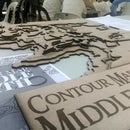Introduction: PlantPouch: the Eco-friendly Seedling Bag!
Are you a nature lover that is disappointed with the black plastic bags used in gardening? Or just someone who wants to help the Earth? Yes? Then this PlantPouch tutorial is right for you!
PlantPouch is a specially designed seedling bag to keep your baby plants safely growing prior to transplantation to your garden. Unlike the traditional black plastic (polythene) seedling bags used in gardening, PlantPouch is made with re-purposed biodegradable fabrics which also lessens the amount of textile waste we produce. As compared to the plastic bags which are usually torn apart after one use, PlantPouch is designed with a drawstring enclosure and expandable opening so that the plant can be easily removed without damaging the bag, so it can easily be used for the next batch of plants. More importantly, PlantPouch is safe for plants as it promotes better water drainage and aeration because of the breathable fabric used to make it. PlantPouch is eco-friendly, re-usable, and safe for plants!
Step 1: Gather Your Materials!
This is going to be a really easy DIY and would only require simple materials and very VERY basic sewing skills so don't panic!
First step is to gather your materials! You're only going to need things that are already lying around your house so let's get started!
1. any old fabric (old t-shirts, flour bags, rags, etc)
2. any fabric rope (you can also DIY this by snipping off the bias tape or a strip of fabric from your old shirts)
2. needle
3. thread
4. scissors
5. measuring tape (you may also use a ruler which doubles as a straight edge for making those lines)
6. permanent marker (optional if you want to design you pouch)
Step 2: Cut Up the Fabric!
Second step is to cut up your chosen fabric to make 6" by 16-17" rectangles (6" x 8-8.5" when bi-folded) rectangles. You should also fit as many rectangles to your fabric as possible to minimize waste. As mentioned earlier, the bias tape can also be snipped off and be used later as the drawstring rope. Next is to cut 1.5" x 3" from the top right and left edges
Step 3: Start Stitching!
The third thing to do is to start sewing the pouch. You will only need to sew 3 lines using very basic stitches.
First stitch:
Using a running stitch, hem the remaining fabric on the top where we'll loop the fabric rope later on. (I skipped this step because luckily the old shirt I used already had a hemmed bottom)
Second stitch:
Fold the fabric vertically and sew the right and left sides together.
Third stitch:
To close the bottom edge, turn your fabric inside out and sew a basting stitch 0.75-1" around the bottom edge. Pull the thread tightly until the bottom edge bunches up then double knot the both ends of the thread together to close off the bottom opening.
Step 4: Assembly Time!
So now that you're done sewing, it is time to finish up the pouch! Insert the fabric rope in the hem then pull through (trick: add a safety pin at the end of the rope so that it will be easier to guide it until it reaches the other opening).
an optional step is to decorate! Using a permanent marker, you can draw any design on the pouch or even add a name for your plants :)
Step 5: Ta-Da!
And we're done! You can now add soil and plant seeds in or transfer plant seedlings to your very own eco-friendly PlantPouch!













